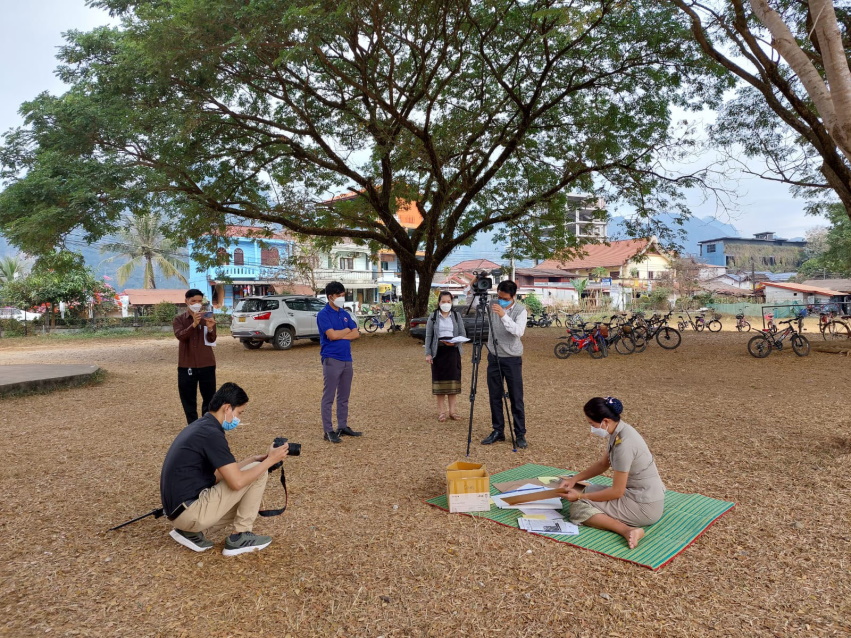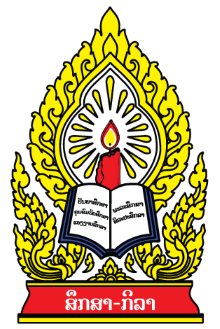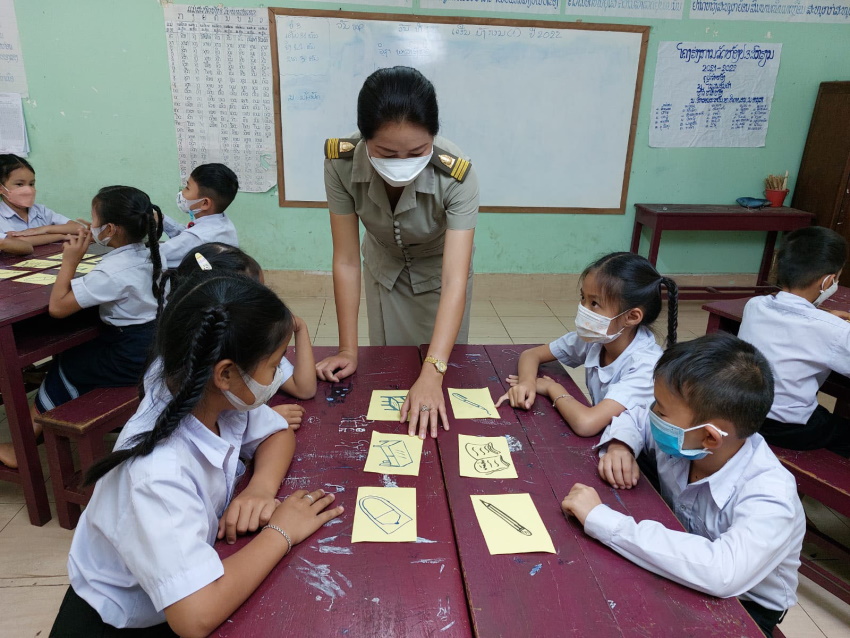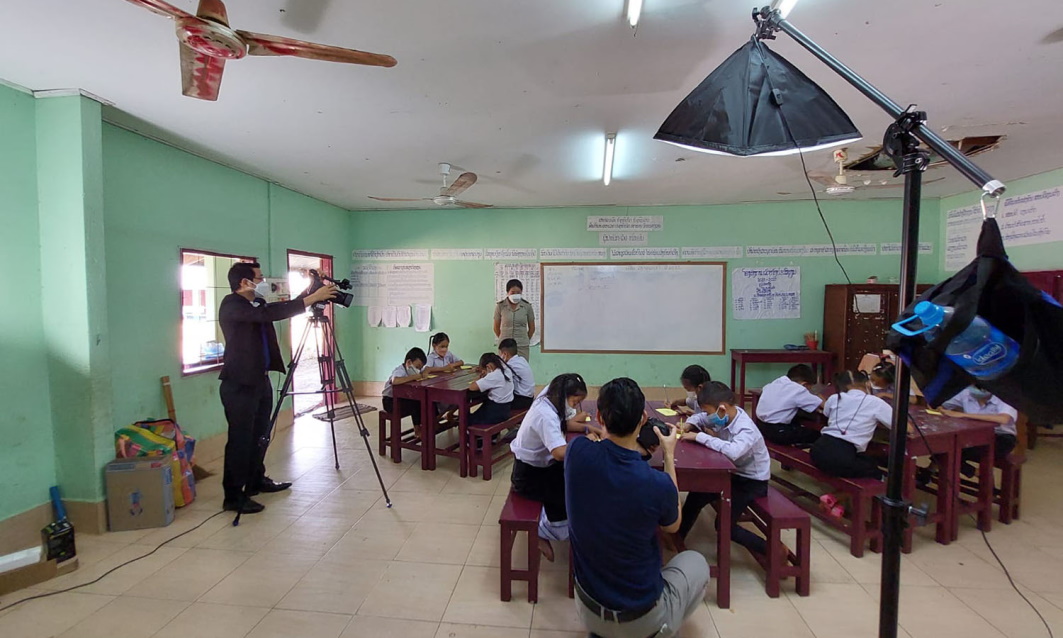Locally made teaching and learning resources is the topic of the new Role Model docuseries episode that has just been released on TV, radio and YouTube
The E-learning team from The Research Institute of Educational Sciences has just released a new video on how to make and use flashcards.
With more than 1.6 million views, the ວິດີໂອສໍາລັບການພັດທະນາຄູ Teacher Development Videos YouTube channel launched in 2019 by the Ministry of Education and Sports with the support of Australia, through their BEQUAL program, is a veritable success. It contains training videos and audio materials for primary teachers and their trainers and pedagogical advisors. The videos are covering a range of subjects and techniques around the new curriculum and the new active learning pedagogical approach. Teachers use them to prepare lessons, improve their teaching method, and learn or review a specific technique. They also play the audio tracks containing music, songs, English stories to students in the classroom. The videos are also broadcasted daily on the ESTV – Education and Sports TV Channel.

Flashcards are a very useful learning and teaching tool for primary teachers. They are cards with words, numbers, pictures on one or both sides. A card may have a question on one side and the answer on the other side for example. Teachers can use flashcards to get their students more engaged and learn in a fun way. Flashcards help students better understand learning content and encourage them to take an active role in their learning. Students learn while doing meaningful games or activities with the flashcards.
With the Grade 1 and 2 new materials, the Ministry of Education and Sports with support of Australia, provided all classes with a set of flashcards to teach Lao Language and phonics. In this new teacher development video, teachers will learn how to create more flashcards adapted to their lessons: flashcards to introduce new vocabulary, to check students’ understanding of a story, to teach spelling; flashcards to help students understand categorizing types of letters, words, animals, fruits, objects and so on; flashcards to help understand the order of a process in a Sciences and Environment experience or the order of a story in Lao Language or in English lessons. The video provides guidance and practical information on how to develop those flashcards to enrich learning.
It also shows teachers how to use resources that are easily available like scrap paper, recycled cardboard, pictures from magazines or newspapers. So, they can produce low cost and environmentally friendly flashcards.
The video also explains how flashcards can help promote gender equity and inclusive education through positive representation of people from different backgrounds depicted in flashcards. It shows examples of flashcards with shared responsibilities at home between males and females, pictures challenging gender stereotypes in sports, in school, pictures representing students with special needs engaged in school activities, students with different ethnicity. The video is also dubbed in Sign Language to be more accessible to all.




 ພາສາລາວ
ພາສາລາວ

